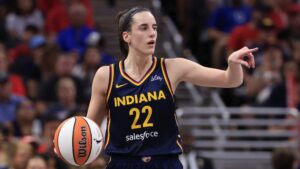The Disparity in WNBA Salaries: A Call for Change
The Women’s National Basketball Association (WNBA) has reached new heights in terms of viewership and attendance, but a stark reality persists: the compensation for female athletes in the league is underwhelming. Renowned sports agent Jeff Schwartz recently shed light on this issue during a compelling interview with CNBC, labeling the current salary structure "blatantly unfair."
The Numbers Speak for Themselves
Schwartz, the founder and CEO of Excel Sports Management—an agency representing over 500 clients, including big names like Tiger Woods and Peyton Manning—has a keen sense of what is just within the sports world. He expressed that "it’s ridiculous what women are getting paid in the WNBA."
For context, the league salary ranges from a mere $64,154 for the minimum player to $241,948 for the highest-paid—pennies in comparison to the National Basketball Association (NBA), where the minimum salary soars to $1.15 million with an average salary exceeding $11 million. Despite breaking viewership and merchandising records during its 2024 season—propelled by star player Caitlin Clark—the WNBA still lags behind in fair compensation.
Structural Challenges
However, it’s essential to delve deeper into the reasons behind this disparity. The NBA has enjoyed decades of foundational growth, amassing billions in corporate sponsorships over its 75-year history. In contrast, the WNBA is only approaching its 29th season, playing a condensed schedule of just four months annually. This significant difference creates a financial gap that cannot be ignored.
Interestingly, as the WNBA struggles for wage parity, professional pickleball players are making headlines, averaging $260,000 in salary—outpacing their WNBA counterparts. This raises questions about where the investment priorities lie.
A New Era with Unrivaled
In a bid to address these inequities, WNBA players recently opted out of their collective bargaining agreement, aiming to negotiate better pay and improved contract terms. The deadline for reaching a new agreement is set for 2027, as stakeholders hope for significant reform.
Schwartz is not only advocating for WNBA players but also fostering innovation within the realm of women’s sports through the launch of a new 3-on-3 league called Unrivaled, led by WNBA star Napheesa Collier. This league aims to revolutionize player compensation by offering equity ownership—a rarity in sports leagues dominated by larger, established counterparts.
Players in Unrivaled are projected to earn an average salary of $220,000 or more, offering them a stake in the league’s success. Schwartz believes ownership for players is a beneficial model, though he acknowledges that traditional leagues may be slow to adopt this practice.
The Road Ahead
As the conversation around pay equity continues to grow, it’s crucial for fans and stakeholders to rally for change. The potential for female athletes in the WNBA and beyond is enormous, but only if they are compensated fairly for their contributions to the sport.
At Extreme Investor Network, we believe in empowering athletes and driving change within our sports economy. The fight for equitable salaries in the WNBA is not just about numbers; it’s about valuing the talent and hard work these women bring to the court. As we follow these developments, we encourage our readers to stay informed, engage in discussions, and support initiatives that promote fairness and equity in sports.
For more insights and updates on business trends and the sports industry, stay connected with us at Extreme Investor Network. Together, we can advocate for a future where all athletes receive the recognition and compensation they deserve.

